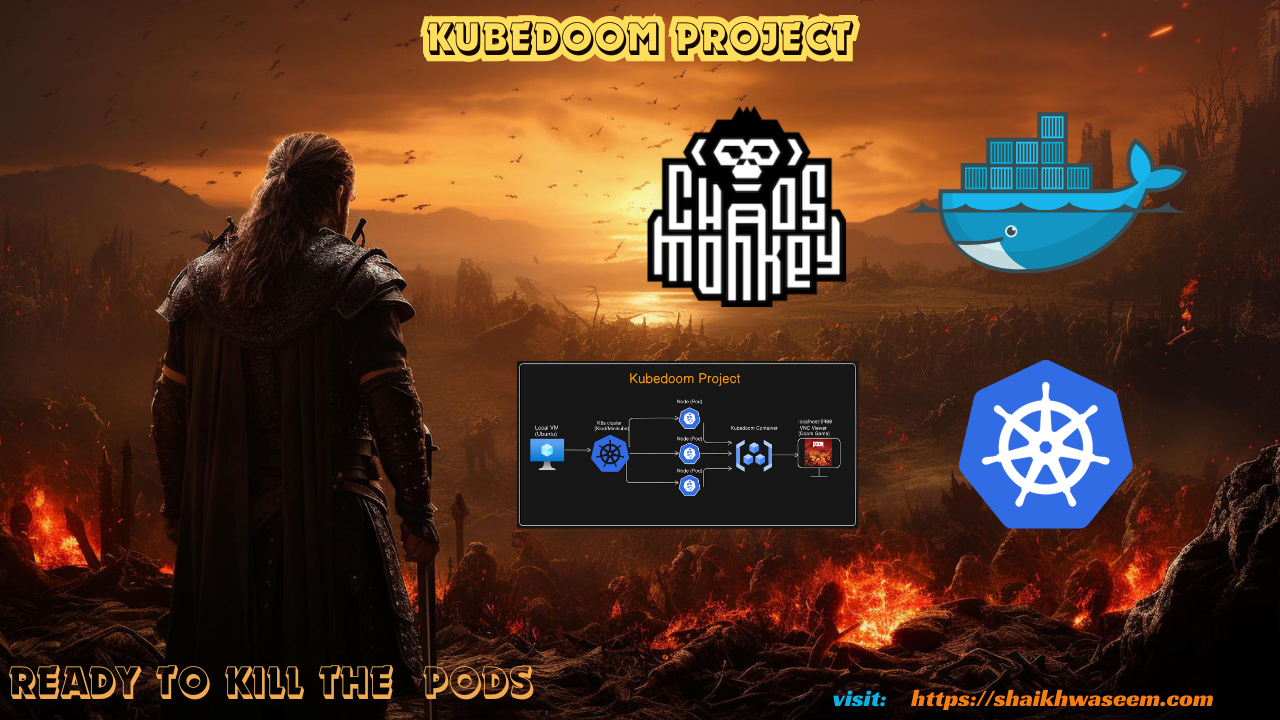
Simple CICD Pipeline Project – Todo Application
This is very basic CICD Pipeline Project for a ToDo Application. Follow the steps below to set up your Continuous Integration and Continuous Deployment pipeline.
Prerequisites
Ensure you have the following prerequisites before proceeding:
- EC2 Machine: Medium Size preferred. (4/GB RAM and 2 Core Processor)
- Docker Setup on EC2 Machine.
- Jenkins Setup: You can either manually install Jenkins or use a Jenkins image.
- GitHub Account: You need a GitHub account to automate the pipeline.
For more updates and projects, visit:
Architecture Diagram
Step 01 - Create EC2 Machine
Step 02 - Connect EC2 Machine
Connect to your EC2 Ubuntu Machine using SSH. Make sure you're in the root user or use 'sudo'.
$ sudo ssh -i "key.pem" ubuntu@<ip-address>Step 03 - Install Docker on EC2 Machine
Install Docker on your EC2 machine. Use the following commands:
Set up Docker's apt repository.
$ sudo apt-get update
$ sudo apt-get install ca-certificates curl
$ sudo install -m 0755 -d /etc/apt/keyrings
$ sudo curl -fsSL https://download.docker.com/linux/ubuntu/gpg -o /etc/apt/keyrings/docker.asc
$ sudo chmod a+r /etc/apt/keyrings/docker.asc
$ echo \
"deb [arch=$(dpkg --print-architecture) signed-by=/etc/apt/keyrings/docker.asc] https://download.docker.com/linux/ubuntu \
$(. /etc/os-release && echo "$VERSION_CODENAME") stable" | \
sudo tee /etc/apt/sources.list.d/docker.list > /dev/null
$ sudo apt-get update
# Install Docker packages.
$ sudo apt-get install docker-ce docker-ce-cli containerd.io docker-buildx-plugin docker-compose-plugin
Step 04 - Installation of Jenkins
Install Jenkins either manually or using container-based installation. Here's the container-based installation command:
$ docker run -p 8080:8080 -p 50000:50000 -d \
-v jenkins_home:/var/jenkins_home \
-v /var/run/docker.sock:/var/run/docker.sock \
-v $(which docker):/usr/bin/docker jenkins/jenkins:ltsAfter running the above command, Jenkins container will be created and started. Access Jenkins using the IP address of your EC2 machine followed by port 8080.
Now you can type blow ip address if your ec2 machine and check whether your Jenkins is accessible or not But make sure that the port should be added on your EC2 Security Group
$ localhost:8080
$ <ip-address>:porty
Now, In order to get the jenkins password. you have to login or access the jenkins container
$ docker exec -it <container-id> bash
$ docker exec -it 98760878abree bash
Step 04 - Jenkins Pipeline Setup
Now that we have setup our EC2 server, Docker, and Jenkins, let's create a simple Jenkins pipeline.
Before creating the pipeline, ensure your Git repository is up to date. Use the following links to update:
Log in to Jenkins using the password generated during setup.
Choose 'Pipeline' and 'Pipeline Script from SCM', using the Jenkinsfile provided in your Git repository.
After setting up the pipleline and connected to git repo. now lets test the below code and see your our pipeline works or not
First create the Jenkinsfile in your git repo and add the below code in Jenkinsfile
pipeline {
agent any
stages {
stage("Code checkout") {
steps {
git branch: 'main', credentialsId: 'github-id', url: 'https://github.com/waseemuddin/simple-cicd-project01.git'
}
}
}
}Now Jenkinsfile has been updated. Goto pileline and press the "Build Now" to check the pipeline fetch git repo and shows the stage view.
Step 05 - Jenkins Set Webhook - Automate the Pipeline Process
To automate the Jenkins pipeline, we'll set up a Git webhook. Navigate to your repository settings and add a webhook with the Jenkins server's IP and port.
Step 06 - Final Step - Run Complete Code
In the final step, we create a complete pipeline from code checkout to container creation.
The updated code is available in the Jenkinsfile. Ensure you have an empty repository on your Docker Hub account for image storage.
pipeline {
agent any
stages {
stage("Code checkout") { # Git Repo Check-out Step
steps {
git branch: 'main', credentialsId: 'github-id', url: 'https://github.com/waseemuddin/simple-cicd-project01.git'
}
}
stage("image build") { # Image Build Step and make sure you have to create the empty repository on your Docker-Hub Account
steps {
sh 'docker image build -t waseem63/mydockerapp:v$BUILD_ID .'
sh 'docker image tag waseem63/mydockerapp:v$BUILD_ID waseem63/mydockerapp:latest'
}
}
stage("Image Push") { # Image Push Step and connect to your docker-hub account. Also remove the image so the storage can be maintain
steps {
withCredentials([usernamePassword(credentialsId: 'docker-hub-id', passwordVariable: 'PASS', usernameVariable: 'USER')]) {
sh "echo $PASS | docker login -u $USER --password-stdin"
sh 'docker push waseem63/mydockerapp:v$BUILD_ID'
sh 'docker push waseem63/mydockerapp:latest'
sh 'docker rmi waseem63/mydockerapp:v$BUILD_ID waseem63/mydockerapp:latest'
}
}
}
stage("Container Creating") { # last step is to fetch the lastet or recent image and create docker container automatically.
steps {
sh 'docker run -itd --name todoapp -p 3000:3000 waseem63/mydockerapp:latest'
}
}
}
}
Now, any push to the repository will trigger the Jenkins pipeline automatically.
Congratulations! You have successfully set up a CI/CD pipeline for your Todo Application.

Linux Essential – Day 02
Welcome to the Essential Linux Commands-Day02 repository!
This project is designed to help new Linux users get comfortable with the command line by introducing some of the most frequently used commands—the ones every beginner should know and will use daily.
We've created beginner-friendly graphics to help you visualize and remember these commands more easily.
| Command | Description |
|---|---|
bpytop | For a real-time, eye-catching system stats display |
gotop | For a real-time, CPU, Memory and Process Utilization |
htop | Shows complete picture of different |
These are foundational commands for navigating Linux. Whether you're a:
- 🧑💻 Developer
- 🧪 Data Scientist
- ☁️ DevOps Engineer
- 🛠️ System Administrator
... mastering these commands will boost your productivity and confidence on the terminal.
If you’re new to Linux:
- Open your terminal.
- Start experimenting with the commands listed here.
- Refer to the image guides for syntax and usage.
Want to go deeper? We recommend pairing this with a sandbox environment like:
Got a command you think every beginner should know?
Have suggestions or want to contribute your own visual guide?
Feel free to:
- Open an issue 🐞
- Submit a pull request 📦
- Share your feedback 💬
Found this helpful? Give us a ⭐ and share it with someone learning Linux!
Let’s build a beginner-friendly Linux community together.
This project is licensed under the MIT License.

Linux For Beginners
linuxforbeginners - Day 01#
🐧 Essential Linux Commands for Beginners 🐧
Welcome to the Essential Linux Commands-Day01 repository!
This project is designed to help new Linux users get comfortable with the command line by introducing some of the most frequently used commands—the ones every beginner should know and will use daily.
📸 Visual Guides
We've created beginner-friendly graphics to help you visualize and remember these commands more easily.
| Command | Description |
|---|---|
ls | List directory contents |
cd | Change directories |
mkdir | Create new folders |
rm | Remove files |
touch | Create an empty file |
top / htop | Monitor system processes |
ping | Test internet/network connectivity |
chmod | Change file permissions |
📚 Why Learn These?
These are foundational commands for navigating Linux. Whether you're a:
- 🧑💻 Developer
- 🧪 Data Scientist
- ☁️ DevOps Engineer
- 🛠️ System Administrator
... mastering these commands will boost your productivity and confidence on the terminal.
📥 Getting Started
If you’re new to Linux:
- Open your terminal.
- Start experimenting with the commands listed here.
- Refer to the image guides for syntax and usage.
Want to go deeper? We recommend pairing this with a sandbox environment like:

AWS Cloud Migration
This repository provides a comprehensive guide to migrating on-premises virtual machines (VMs) to Amazon EC2 using the AWS Application Migration Service.
Prerequisites
- An active AWS account in a supported region.
- Network connectivity between your on-premises environment and AWS, either through AWS Direct Connect, VPN, or the internet.
- Administrative access to the source VMs intended for migration.
Workflow Diagram
Architectural Diagram
Migration Steps
- Initialize AWS Application Migration Service:
- Access the AWS Application Migration Service Console.
- Set up the service for your AWS account.
Configure the Staging Area:
- In your AWS Management Console, set up a staging area subnet within your VPC.
- Ensure the subnet has the necessary permissions and resources for data replication.
Install the AWS Replication Agent on Source Servers:
- Download the AWS Replication Agent from the official AWS documentation.
- Install the agent on each on-premises VM you plan to migrate.
Sample-Commands:
sudo wget -O ./aws-replication-installer-init https://aws-application-migration-service-us-east-1.s3.us-east-1.amazonaws.com/latest/linux/aws-replication-installer-init
sudo chmod +x aws-replication-installer-init; sudo ./aws-replication-installer-init --region us-east-1
- Monitor Data Replication:
- Use the Application Migration Service console to monitor replication progress.
- Wait for the initial synchronization to complete before proceeding.
- Launch Test Instances:
- After replication, launch test instances in AWS to verify successful migration.
- Conduct user acceptance testing (UAT) to ensure applications are functioning correctly.
- Finalize the Cutover:
- Once testing is successful, perform the cutover to the AWS environment.
- Decommission the original on-premises VMs if they are no longer needed.
Best Practices
- Avoid taking source servers offline or rebooting them until the cutover is complete.
- Allocate sufficient time for user acceptance testing to identify and resolve any issues.
- Regularly monitor the replication status to detect and address potential problems early.
- Use temporary AWS Identity and Access Management (IAM) credentials for agent installation to enhance security.
Additional Resources
For more detailed information, refer to the AWS Prescriptive Guidance on migrating an on-premises VM to Amazon EC2 using AWS Application Migration Service.

Create Your First Git Repository And Push to GitHub Account
Create Your First Git Repository And Push to GitHub Account
GitHub is a popular platform for hosting and collaborating on code repositories. Whether you are new to coding or an experienced developer, knowing how to create a repository and push your code to GitHub is a crucial skill.
In this step-by-step Lab, I will guide you through the process of creating your first GitHub repository and pushing your code to your GitHub Account. By the end of this Lab, you will have the necessary skills to get started with version control, code hosting, and collaboration on GitHub. I will try my best to cover topics such as GitHub basics, repository creation, and pushing code to GitHub.
Youtube Video: https://youtu.be/pHLb3GMyNhI
GitHub Repo :https://github.com/waseemuddin/Git-for-beginners.git
$ mkdir Git-for-begineers
$ cd Git-for-begineers
$ git status$ mkdir imges
$ mkdir js
$ mkdir css
$ mkdir project
$ touch css/front.css
$ touch js/mysim.js
$ touch index.php$ git init
$ git status
$ git add .
$ git commitOur local repository files are commited and now its time to push into remote repository
To push your code to remote repository, first you have to create the empty reposity on your github account
Got your github accunt profile and create new repository
Now its time to push your local repository to your remote repository means your Github account
As you see all local repository files/folders are now push to remote repository

Kubedoom DevOps Project
Kube DOOM Project for Kubernetes learning purposes
Kill Kubernetes pods using Id's Doom!
The next level of chaos engineering is here! Kill pods inside your Kubernetes cluster by shooting them in Doom!
Youtube Video: https://youtu.be/pHLb3GMyNhI
GitHub Repo : https://github.com/waseemuddin/kubedoom-project-devops
This repo contains about the Kube Doom project for learning and implementing the Kubernetes and killing the pods inside your kubernetes cluster.
The credit goes to iiDKx & storax/kubedoom.
The following steps are involved to implement the KubeDoom Project
Prerequisites
This is project can be implemented on your local machine (VM), AWS Cloud or any other cloud provider which suites you.
- Local Machine(VM) (Ubuntu 22.04)
- Docker Installation link
- Kind or Minikube or kubeadm Installation. (Install Kind quickly with:
./install-prereqs.sh) - TigerVNC Viewer
Step 1: Update VM/Ubuntu
After installation of VM (ubuntu), please make sure your sytstem is updated
#Basic command to make sure all are update
sudo apt update
sudo apt-get update
#Check IP
ifconfig
ip --brief addr show
#Check firewall
sudo ufw status
sudo ufw allow 22/tcp
#swapoff
sudo -i
swapoff - aStep 2: Steup Kubernetes Cluster (Kind)
Running Kubedoom inside Kubernetes
Install kind master and worker node
See the example in the /manifest directory. You can quickly test it using kind. Create a cluster with the example config from this repository:
$ kind create cluster --config kind-config.yaml
Creating cluster "kind" ...
✓ Ensuring node image (kindest/node:v1.25.3) 🖼
✓ Preparing nodes 📦 📦
✓ Writing configuration 📜
✓ Starting control-plane 🕹️
✓ Installing CNI 🔌
✓ Installing StorageClass 💾
✓ Joining worker nodes 🚜
Set kubectl context to "kind-kind"
You can now use your cluster with:
kubectl cluster-info --context kind-kind
Not sure what to do next? 😅 Check out https://kind.sigs.k8s.io/docs/user/quick-start/
Set your Kube context with: kubectl cluster-info --context kind-kind
This will spin up a 2 node cluster inside docker, with port 5900 exposed from the worker node. Then run kubedoom inside the cluster by applying the manifest provided in this repository. The Kubernetes-Manifests-Files directory holds Kubernetes manifests for deploying your application on cluster.
$ kubectl apply -k manifest/
namespace/kubedoom created
deployment.apps/kubedoom created
serviceaccount/kubedoom created
clusterrolebinding.rbac.authorization.k8s.io/kubedoom createdStep 3: Docker Build
Build the image with docker build --build-arg=TARGETARCH=amd64 . -t kubedoom while in this directory. Then run:
#docker run command and and attached pods
$ docker run -p5801:5800 \
-e NAMESPACE=default \
--net=host \
-v ~/.kube:/root/.kube \
--rm -it --name kubedoom \
kubedoom:latestOptionally, if you set -e NAMESPACE={your namespace} you can limit Kubedoom to deleting pods in a single namespace
Step 4: Docker Build
Deploy some Nginx pods to your cluster:
kubectl apply -f k8s/nginx-deployment.yaml
You can refresh the dashboard as you kill the pods from Kubedoom and expand upon this to track other metrics and applications in your cluster.
Step 5: Attaching a VNC Client
Now start a VNC viewer and connect to localhost:5900. The password is idbehold:
$ vncviewer viewer localhost:5901You should now see DOOM! Now if you want to get the job done quickly enter the cheat idspispopd and walk through the wall on your right. You should be greeted by your pods as little pink monsters. Press CTRL to fire. If the pistol is not your thing, cheat with idkfa and press 5 for a nice surprise. Pause the game with ESC. iddqd for god mode.
Cheat codes found here: https://doom.fandom.com/wiki/Doom_Cheat_Codes
To connect run:
$ vncviewer viewer localhost:5900
Step 6: Kubedoom demo
Create a dashboard in Grafana to monitor the Nginx containers. To do this open Grafana at http://localhost:3000 and login. Make sure you have your data source set to your Prometheus pod from the previous step. From the left hand menu, create a new dashboard and add a panel. Select the panels dropdown menu, select Inspect and then select Panel JSON. Here you will be able to delete the current JSON and replace it with JSON from the grafana folder ./grafana/nginx-panel.json. Save and apply this and you should be able to see the CPU usage of the current deployed pods.
Step 7: Deploying Prometheus
Create a monitoring namespace to keep things tidy.
kubectl create namespace monitoring
Deploy Prometheus to scrape and store metrics for your cluster with:
kubectl apply -f k8s/prometheus.yaml -n monitoring
List the Prometheus pod name and IP address.
$ kubectl get pods -o wide -n monitoring
NAME READY STATUS RESTARTS AGE IP NODE NOMINATED NODE READINESS GATES
prometheus-deployment-75cff7d89f-w422q 1/1 Running 1 (15m ago) 25m 10.244.1.3 kind-worker <none> <none>In a separate terminal run the below command to port-forward and you'll be able to access Prometheus on http://localhost:8080:
kubectl port-forward -n monitoring prometheus-deployment-75cff7d89f-w422q 8080:9090
To run in background:
kubectl port-forward -n monitoring prometheus-deployment-75cff7d89f-w422q 8080:9090 &
Prometheus graph display command.
rate(container_cpu_usage_seconds_total{namespace="default", container="nginx"}[30s]) * 100
Step 8: Deploying Grafana
Deploy Grafana to graph our metrics from Prometheus with:
kubectl apply -f k8s/grafana.yaml -n monitoring
In another terminal, list the pod names and port-forward from one of the pods:
$ kubectl get pods -n monitoring
NAME READY STATUS RESTARTS AGE
grafana-5469c64c7d-ddz4r 1/1 Running 1 (20m ago) 30m
grafana-5469c64c7d-xdlmw 1/1 Running 1 (20m ago) 30m
prometheus-deployment-75cff7d89f-w422q 1/1 Running 1 (20m ago) 30m
$ kubectl port-forward -n monitoring grafana-5469c64c7d-ddz4r 3000
Forwarding from 127.0.0.1:3000 -> 3000
Forwarding from [::1]:3000 -> 3000
Grafana should now be reachable at http://localhost:3000.
Log in with username admin and password admin.
Once you are logged in, you will need to go to the Settings (gear icon bottom left) and edit the Data sources.
Change the URL in the settings from http://prometheus-service.monitoring.svc:8080 to http://<Prometheus Pod IP>:9090. Use the below command to get the Prometheus pod IP.
$ kubectl get pods -o wide -n monitoring
NAME READY STATUS RESTARTS AGE IP NODE NOMINATED NODE READINESS GATES
prometheus-deployment-75cff7d89f-w422q 1/1 Running 1 (15m ago) 25m 10.244.1.3 kind-worker <none> <none>So I would enter http://10.244.1.3:9090 as my data source. Save and test this.
Kubedoom requires a service account with permissions to list all pods and delete them and uses kubectl 1.25.3.
Running Locally
In order to run locally you will need to
- Run the kubedoom container
- Attach a VNC client to the appropriate port (5901)
With Podman
Run kubedoom:latest with podman locally:
$ podman run -it -p5901:5900/tcp \
-v ~/.kube:/tmp/.kube --security-opt label=disable \
--env "KUBECONFIG=/tmp/.kube/config" --name kubedoom
kubedoom:latestKilling namespaces
Kubedoom now also supports killing namespaces in case you have too many of them. Simply set the -mode flag to namespaces:
$ docker run -p5901:5900 \
--net=host \
-v ~/.kube:/root/.kube \
--rm -it --name kubedoom \
kubedoom:latest \
-mode namespacesBuilding Kubedoom
The repository contains a Dockerfile to build the kubedoom image. You have to specify your systems architecture as the TARGETARCH build argument. For example amd64 or arm64.
$ docker build --build-arg=TARGETARCH=amd64 -t kubedoom .To change the default VNC password, use --build-arg=VNCPASSWORD=differentpw.





























































